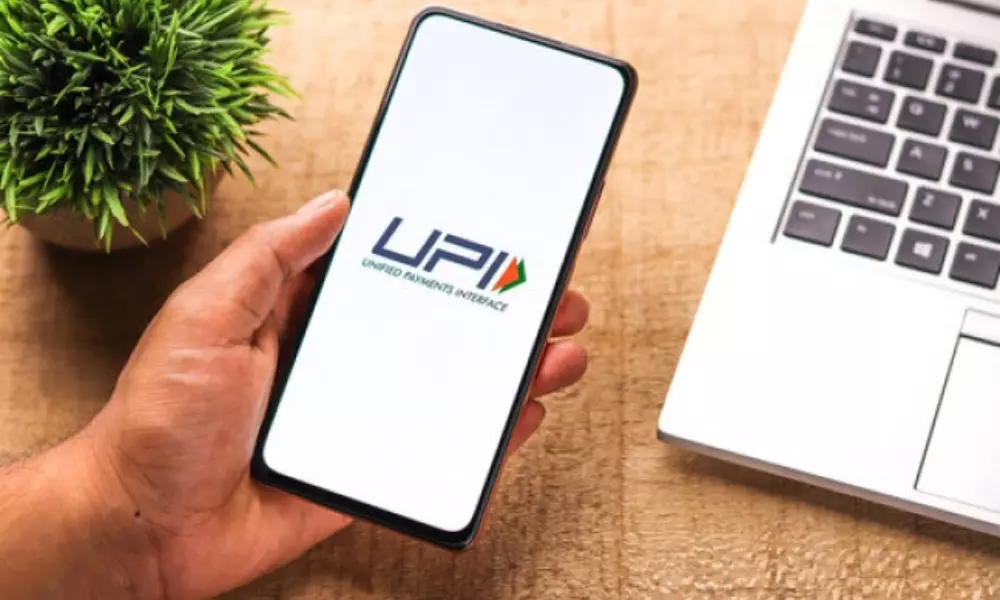
Image Credits: Source
Cashfree Payments Provide The Best UPI Suite For Merchants Who Wants To Win Over Tier 3,4 Cities
Writer: Devanshee Singh
She is an avid reader, a movie buff and someone who lives on classic Hindi songs. As a media professional, she tries to create content the audience can connect with. Her purpose in life is to make the world a little better place, and she has started taking steps towards it.
India, 18 March 2023 9:53 AM GMT
Editor : Riya Kumari |
A simple girl truly without filters trying to reach out to society to contribute something meaningful in whatever little way possible! In the era of social media, I’m here to deliver the content which remains out of the sight of the audience, a good communicator to voice out your stories, truly unfiltered!
Creatives : Devanshee Singh
She is an avid reader, a movie buff and someone who lives on classic Hindi songs. As a media professional, she tries to create content the audience can connect with. Her purpose in life is to make the world a little better place, and she has started taking steps towards it.
UPI is a payment technology developed by the National Payment Corporation of India (NPCI) that integrates multiple banking channels into a single application.
Unified Payment Interface (UPI) is a payment technology developed by the National Payment Corporation of India (NPCI) that integrates multiple banking channels into a single application. Receiving and paying money is quick with a "virtual Id." Ease of functionality and simplicity of transacting anywhere at any time is rapidly growing the usage of UPI.
Tier 1 & Tier 2 cities are well-developed in infrastructure, internet connectivity, and established businesses. In contrast, Tier 3 & Tier 4 cities are marginally developed in terms of markets, business exposure, and other infrastructure. India ranks amongst the highest in terms of internet users as the country has good internet and broadcasting connectivity. Today, almost all Indian cities, including Tier 3 & 4 cities, are well connected with the postal and delivery facilities, where customers spend cashless and get the products at their doorstep.
With the help of the UPI suite, payments are integrated into e-commerce sites and many other physical retail stores in various ways, which has widened the market area for merchants in Tier 3 & Tier 4 cities. UPI model is not only limited to e-commerce but has spanned almost all sectors in the market.
For many business owners seeking digital payments, customers' dependency on physical currency is a hurdle in Tier 3 & 4 cities. UPI technology allows businesses to switch to cashless payments in such places. Let's see how Cashfree Payments offer various UPI suites for businesses. They are-
● Dynamic QR code
● UPI Virtual payment address (VPA)
● Webflow UPI integration
● UPI Payment link
● UPI Intent
● UPI SDK
Dynamic QR code- UPI payments are integrated into eCommerce sites in various ways. Ideally, Static QR codes are seen or pasted in small retail shops, restaurants, and pharmacies. Customers scan the Static QR code, enter the amount and proceed with the payment. However, in Dynamic QR code, a specific QR code is generated on the merchant's device at the time of billing. When the customer scans the QR code, the details, like the amount to be paid and the merchant's bank details, display automatically. The customer just needs to proceed with the payment. In Static QR codes, it is commonly seen that merchants request consumers at provision stores to show their mobile phones for proof of payment. This process makes the small retailer dependent on his customer for payment proof. While using a Dynamic QR code, showing the payment proof is no longer required, and it instantly closes the payment loop. Hence, it ensures easy, cashless payments, empowering customers and retailers.
UPI Virtual Payment Address (VPA)- It is a unique ID allotted to every individual/business on the UPI platform. Receiving or sending money is accessible from any bank account with the user's mobile number registered with the unique UPI ID. Suppose a user wishes to make a UPI payment through, let's say, Google Pay. It is important to create a UPI account on Google Pay. The application will automatically generate the user's UPI ID or VPA. To create a UPI account, the user must link a bank account by providing bank details. Once a user's UPI ID or VPA gets created, they can share it with anyone to send/receive money. Using a single VPA, users can do transactions via various bank accounts at any time of the day or night. The unique VPA Id is editable and can be changed anytime. The above feature adds to the security of the transactions. If we consider the cost part, NEFT or RTGS transactions in banks levy charges, and in the case of UPI, almost nil charges are levied for any transactions.
Webflow UPI Integration-It is one of the most popular UPI integration modes. Customers shopping over the websites select UPI as a payment option, enter their mobile UPI ID as mentioned in the previous point, validate it, and submit. The process gets verified by two-way authentication by opening the UPI application and entering UPI PIN received on the registered mobile number. After its authentication, the transaction gets successful.
UPI Autopay-It is a new facility implemented under UPI 2.0. It enables customers to make recurring payments under any UPI application, such as telephone bills, rental expenses, EMI, OTT subscriptions, etc. UPI Autopay allows customers to set a stipulated amount and a particular date for the automatic payment to happen. Customers need not go to their banks for the cash deposit and do the form-filling formalities. UPI Autopay benefits the financial sector, OTT platforms, and other business sectors that do not require their physical retail outlets.
UPI Payment Link- Cashfree Payments offers one of the popular payment methods, i.e., UPI Payment link. It enables businesses to generate a link that can be shared easily with their customers and the invoices via SMS, Email, or Whatsapp. It has a higher success rate as compared to other payment modes. Customers need not enter card or net banking login details, thus avoiding manual errors and failed payments. Cashfree Payments integrated with powerful APIs can be used to automate the process. The primary API is used to create a collect request for customers' phones. Once the payment is confirmed, a notification is sent to the customer's mobile phone.
UPI Intent- It provides customers a smoother payment experience without switching between multiple applications to complete the payment. While online shopping, customers select the UPI payment option and proceed to make a payment. A list of available UPI apps supporting the intent flow will be displayed on their device. Customer selects their preferred application to make the payment. The selected UPI application opens with all the required details pre-populated. Customers enter their UPI PIN to complete the payment. Successful payment notification is sent on the app or website.
UPI Software Development Kit- Cashfree Payments offer UPI Software Development Kit (SDK) option to businesses with many inward transactions, where the merchant can receive the payment without the customer being redirected to the Payment Service Provider (PSP) application. This integration works on Android and IOS-supported smartphones. Cashfree Payments offers UPI SDKs from all popular PSP apps like Google Pay, PhonePe, and Amazon Pay. Let's say when a customer is on any website at the payment checkout page, after choosing a desired UPI PSP option, the SDK will open within the website, and the customer can finish the payment process there. No separate UPI app, such as BHIM, Google Pay, etc., is opened in this option since there is no redirection to any third-party application using UPI SDK integration, and the conversion rate increases.
Unified Payment Interface offers a limit of Rs 1 lakh per transaction and Rs 1 lakh per day. In the 5G era, businesses and banking sectors have accelerated the implementation of UPI payment mechanisms in their business model. The usage of UPI payments is growing exponentially in India, majorly in Tier 3 & 4 cities. UPI payments' benefits have spanned beyond metro cities' boundaries to Tier 3 & 4 cities. People residing in non-metros are actively using UPI payments for online shopping, in-store purchases (costs via QR code), OTT subscriptions, and others, owing to which Tier 3 & 4 cities are fast-emerging and are surpassing the Tier-1 & 2 markets. Today, one can easily walk out of their home without a wallet and rely on their smartphone for all their payment transactions. Besides being secure, convenience and fast functionality attract people to UPI transactions in smaller towns.
 All section
All section














